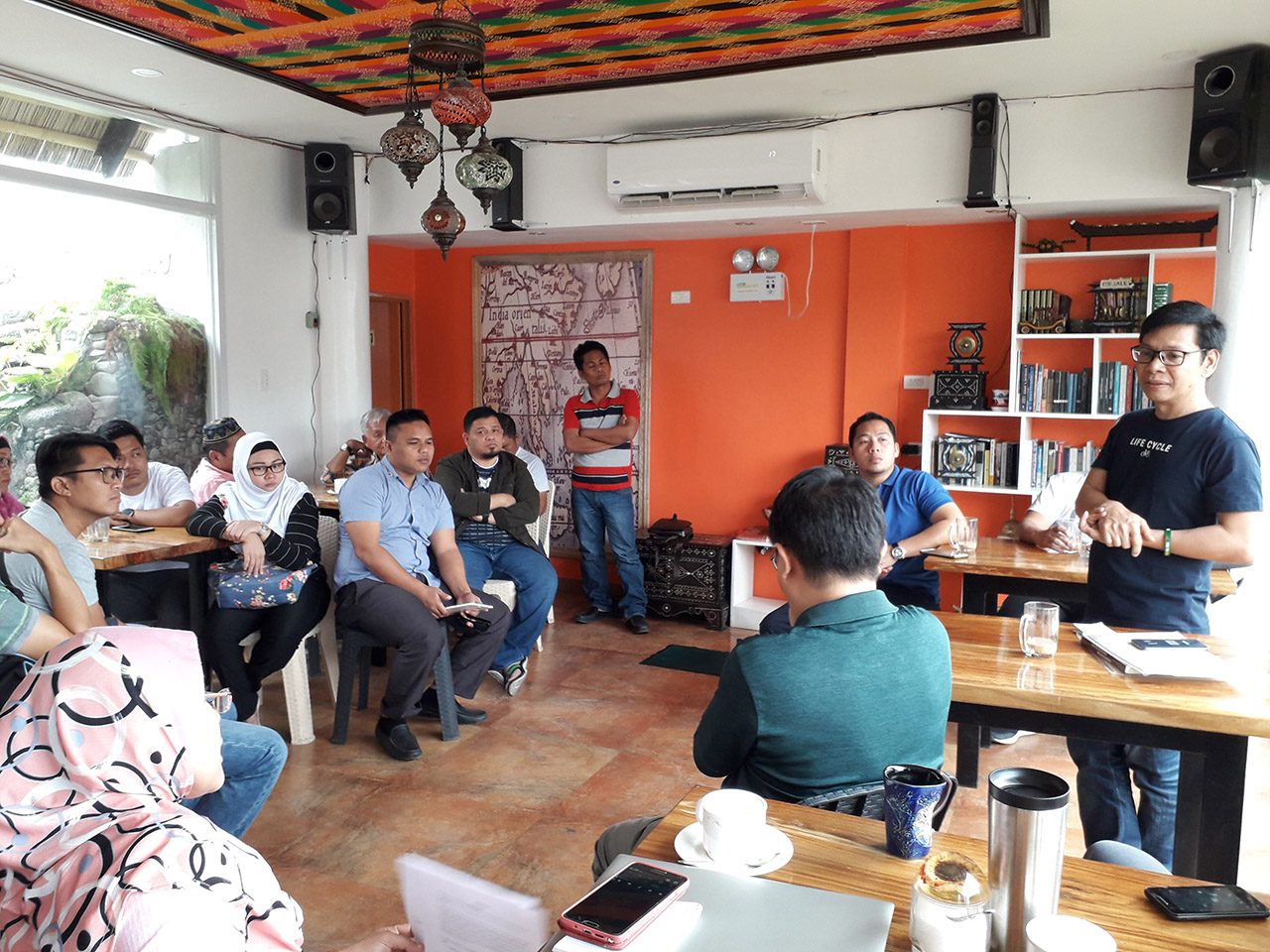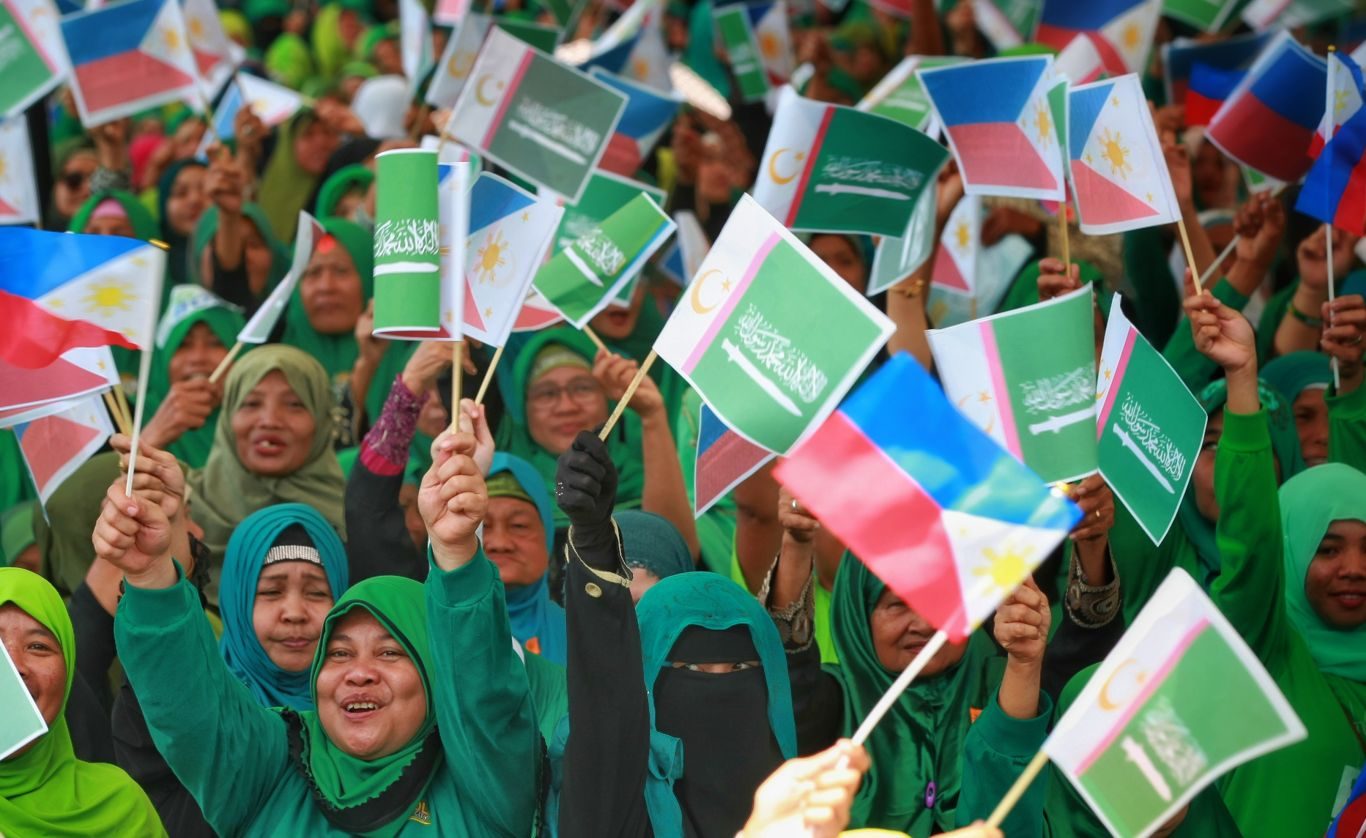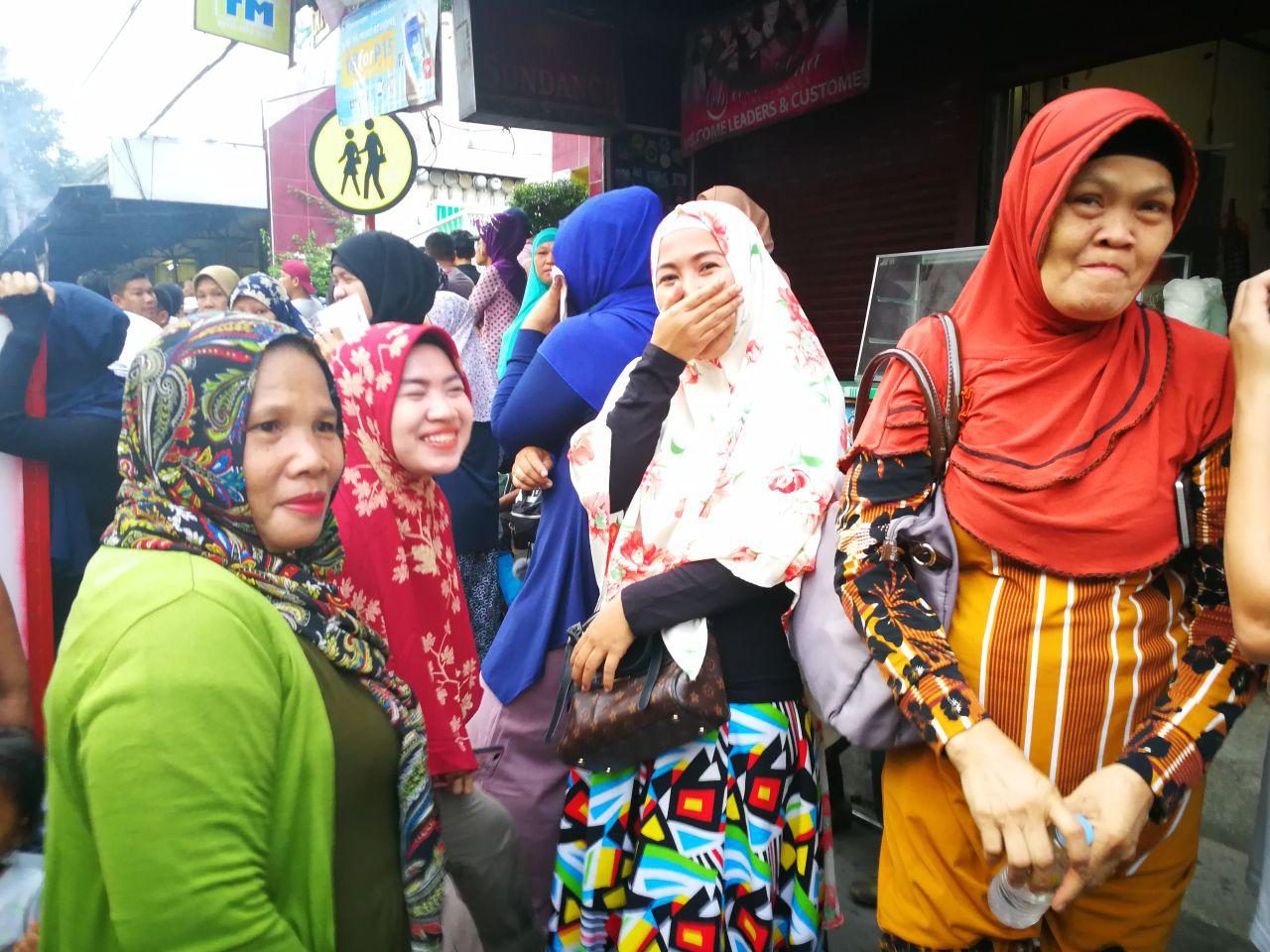SUMMARY
This is AI generated summarization, which may have errors. For context, always refer to the full article.

COTABATO CITY, Philippines – Cries of “Allah hu akbar!” (God is great!) rang through the streets of Cotabato City on Tuesday, January 22, after Cotabato City voted to join a new Bangsamoro autonomous region.
At the Shariff Kabunsuan Cultural Complex, where the board of canvassers proclaimed the “yes” votes had won, Muslims and Christians raised their fists in victory or hugged each other before taking photos of the final results flashed on a wall. All through the night, residents celebrated in the main thoroughfares, with passing car drivers honking their approval.
Such euphoria from supporters of the Bangsamoro Organic Law (BOL) comes from the knowledge that their victory was no easy feat.
How did they pull it off? Based on interviews with political observers and leaders of pro-BOL groups, we cite 5 factors:
- Years of grassroots organizing
- Women’s door-to-door campaign
- Targetted messaging among communities and online
- Support of Christians and the national government
- Deployment of unarmed MILF members to protect votes
It helped that the Muslim population in Cotabato City had grown over the years.
As of the 2015 census by the Philippine Statistics Authority, 76% of Cotabato City’s population was Muslim. It had grown from the 62% in 2000. According to the military’s Western Mindanao Command, a majority of the city’s registered voters – 60% – showed up to cast their vote.
Yet, even Moro Islamic Liberation Front (MILF) leaders knew they had to fight hard for this win. (READ: Why Cotabato City ‘yes’ vote matters)
Despite their belief that most Cotabateños favored inclusion in the Bangsamoro Autonomous Region in Muslim Mindanao (BARMM), they knew fierce opposition from local leaders in the city could endanger victory.
To complicate matters, 3 discrepancies were found in the Certificate of Canvass showing Cotabato City’s total votes – errors in the total number of registered voters and the number of voters who cast their votes.
MILF peace panel chairman Mohagher Iqbal downplayed these discrepancies, saying they did not involve the “yes” and “no” tallies themselves. On Friday, January 25, the Commission on Elections declared the BOL “deemed ratified.” (READ: Rappler’s special coverage on the Bangsamoro Vote 2019)
Grassroots mobilization
The campaign and messaging strategy in the city, particularly by the MILF political party United Bangsamoro Justice Party (UBJP), proved effective, said Ben Bacani of the Institute of Autonomy and Governance, a think tank based in Cotabato City.
Naguib Sinarimbo, UBJP deputy secretary-general, said the MILF’s decades of experience in community-organizing played a role in the “yes” campaign’s success.
“Their biggest strength has always been their organization, down to the barangays,” he said.
MILF chief Murad Ebrahim said most people in Cotabato City are either MILF members or sympathetic to them.
“More than half” of the city’s 37 barangays are under their influence, according to Iqbal.
These barangays also benefit from their MILF association. The MILF’s Bangsamoro Development Authority, created during the peace negotiations, provides medical assistance and livelihood projects to these villages, and these benefits reach the Christians there as well, said Iqbal.
Weeks before the poll, several groups, across sectors and religions, had been active in raising awareness about the BOL and what Cotabato City would get from joining the BARMM.
Sinarimbo said their plan made use of all their institutions and groups.
Women and mosques
Mosques became venues to explain the BOL. There was door-to-door campaigning too.
“We tasked women to do the house-to-house campaign as it is most likely that people will open their doors and start conversations if it’s women knocking on their doors,” he told Rappler.
Youth groups like the Muslim Youth Brotherhood were in charge of “active campaigning,” such as holding youth assemblies and rallies.
To ensure they had the votes, UBJP organized volunteers “down to the precinct-level.”
By November 2018, at least 98% of Cotabato City youth knew about the BOL, according to a survey by non-government group International Alert Philippines.
Message of hope vs fear
The other side, however, was not giving up without a fight.
All over the city, posters reading “No to BOL! No to fake promises!” were posted beside pro-BOL posters. (READ: As Bangsamoro vote nears, tensions rise in Cotabato City)
The formidable champion of the “no” vote was none other than popular mayor Cynthia Guiani who commanded the loyalty of most barangay captains.
We spoke with residents who, on condition of anonymity, admitted that their barangay captains used their position to create an atmosphere where voting in favor of inclusion would be unacceptable.
“It actually happened where barangay officials would make their presence felt and convince people through their position, on how to vote,” said Bangsamoro Transition Commission member Raissa Jajurie, a Cotabato City resident.
Guiani held press conferences where she said the city does not need BARMM and could be worse off under the fledgling regional government. She’s accused the MILF of harassing “no” voters and bringing in “outsiders” to intimidate residents.
To counter this messaging, BOL supporters said they focused on cultivating hope about what the law had the power to do.
There were also groups focused on social media messaging and campaigning.
“We put in the message of hope as against fear. We emphasized the need for change and a certain future rather than the status quo and uncertainty,” said Sinarimbo.
To respond to the accusation of BOL’s “fake promises,” Jajurie said their groups only had to point to the existence of the law.
Some ways they got their message across was through barangay assemblies, distribution of leaflets with answers to “frequently asked questions,” and radio interviews.
They reached out to Muslim communities specifically through khutba or sermons in mosques.

Emphasis was made on how the BOL would bring about peace because it addressed historical grievances of the Moros. The greatly expanded powers of the Bangsamoro government and unconditional funding would mean the Bangsamoro people would now more fully govern themselves.
“Addressing historical injustice and reclaiming Cotabato City for the Bangsamoro won over governance and security considerations,” Bacani told Rappler.
Support of Christians, national government
It was also critical that there was real support for the BOL among Christians in Cotabato City.
This support, said Sinarimbo, played a “very big role” in the “yes” vote victory.
Retired Cotabato Archbishop Orlando Quevedo, also Mindanao’s first and only cardinal, has been a longtime advocate of a Bangsamoro law. His acknowledgement of the need to address injustices against Muslims of Mindanao have helped bridge the religious divide.
The Christians for Peace Movement has held fora in the city and all over ARMM, allaying fears of Christians that they would lose their rights under the BARMM.
“There were very supportive Catholic groups and leaders who convinced other Catholics that there is nothing to fear in being part of the BARMM. Also, inter-faith efforts were taken by these Catholic leaders to foster understanding, respect, and co-existence between Christians and Muslims,” said Jajurie.
The “yes” vote won by over 11,600 votes in Cotabato City. In Isabela City, where the fight was also heated, the “yes” vote lost by 3,402 votes. Compared to Cotabato City, Catholic Church leaders in Isabela City had been more vocal about opposing BARMM inclusion.
The support of the national government also played a big role.
Everyone from President Rodrigo Duterte to Defense Secretary Delfin Lorenzana to peace process adviser Carlito Galvez Jr had lent their voices to the “yes” campaign.
Guarding the votes
But for MILF chairman Murad, the biggest factor to victory was that they ensured BOL supporters would feel safe when they cast their vote.
Apart from alleged intimidation by barangay officials, there had been a lot of fear-mongering in the days leading to the plebiscite.
False news spread on social media that BOL supporters were rushed to the hospital due to food poisoning. There had been rumors of a Marawi siege-like scenario taking place on January 21, plebiscite day.
And on D-day itself, threatening text messages convinced 72 teachers not to show up for their plebiscite duties.
Such incidents only aggravated fears stoked by the New Year’s Eve bombing near the city’s South Seas Mall and the lobbing of a grenade at a judge’s house on the eve of the plebiscite.
To allay fears of voters, the MILF deployed their soldiers to watch over precincts, without arms.
“We deployed unarmed MILF people in the area just to watch and to protect them, make sure our people will be allowed to vote and to protect their votes,” said Murad.
Jajurie had the same observation. Deploying Bangsamoro Islamic Armed Forces (BIAF) personnel, even if unarmed, helped make BOL supporters feel safer.
“They anticipated some of the concerns, like the presence of the BIAF in the communities was really just to counter the expectation [of violence]…It was reassurance to Moro communities that they were there to protect them,” said Jajurie.
Rappler was present at the meeting of BIAF personnel and volunteers held on the eve of the plebiscite in MILF’s Camp Darapanan.
In that meeting, some 1,200 men were briefed on what they could and could not do during the plebiscite. The “don’ts” included acts of violence, carrying guns, and wearing their uniforms. They were told they could only monitor the precincts and report untoward incidents to authorities.
A source familiar with the operations said that the MILF deployed two companies of unarmed BIAF personnel for every voting center (for example, an elementary school), which contains multiple precincts.
One company is composed of 120 personnel so every voting center would have some 240 personnel assigned to observe.
6th Infrantry Division commander Cirilito Sobejana, however, said that the BIAF “were not hostile.” He himself had made rounds to check on voting centers and had noticed, at most, persistent chanting by the BIAF and verbal clashes with BOL naysayers.
Despite that, the BIAF were perceived as intimidating the “no” voters, causing Presidential Adviser on the Peace Process Carlito Galvez Jr to ask MILF to pull out some of the men from the city.
The ‘Moro vote’
Underlying all these efforts was the confidence, on the part of BOL supporters, that there was genuine support for inclusion in the BARMM among the Muslims of Cotabato City. (READ: The torch is lit for Cotabato)
Many would rather not use the lens of religion to explain the “yes” victory, worrying it would only emphasize divisions.
But Jajurie said the “Moro vote” was critical.
She and her group noticed that it was the Moro-dominated villages that delivered the “yes” votes, citing the Bagua and Tamontaka villages.
Though predominantly Muslim, Cotabato City had rejected joining ARMM in 2001, and before that, in 1989.

For Murad, their triumph shows Cotabateños are convinced that BARMM is an improvement of the ARMM.
“The people have spoken and have chosen to side with the BOL,” said a jubilant Murad. – Rappler.com
Add a comment
How does this make you feel?
There are no comments yet. Add your comment to start the conversation.